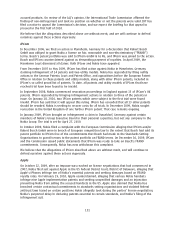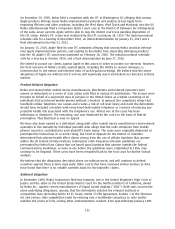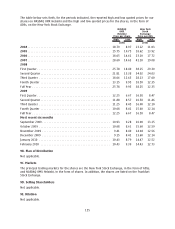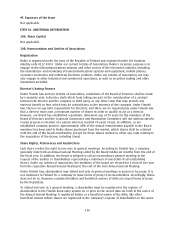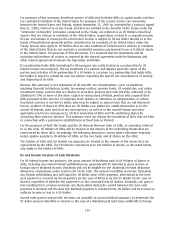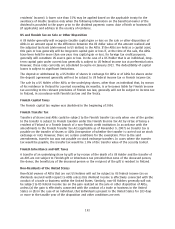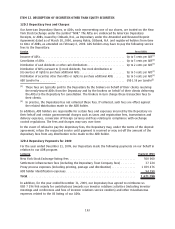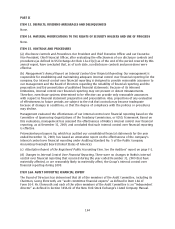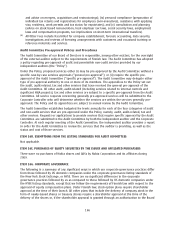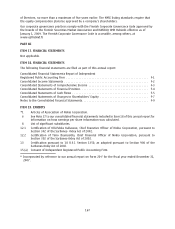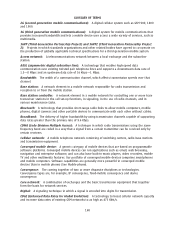Nokia 2009 Annual Report Download - page 162
Download and view the complete annual report
Please find page 162 of the 2009 Nokia annual report below. You can navigate through the pages in the report by either clicking on the pages listed below, or by using the keyword search tool below to find specific information within the annual report.currency. Accrual basis taxpayers are urged to consult their own tax advisors regarding the
requirements and elections applicable in this regard.
Under the Finnish Income Tax Act and Act on Taxation of Nonresidents’ Income, nonresidents of
Finland are generally subject to a withholding tax at a rate of 28% payable on dividends paid by a
Finnish resident company. However, pursuant to the Treaty, dividends paid to US Holders generally
will be subject to Finnish withholding tax at a reduced rate of 15% of the gross amount of the
dividend. Qualifying pension funds are, however, pursuant to the Treaty exempt from Finnish
withholding tax. See also “—Finnish Withholding Taxes on Nominee Registered Shares” below.
Subject to conditions and limitations, Finnish withholding taxes will be treated as foreign taxes
eligible for credit against a US Holder’s US federal income tax liability. Dividends received generally
will constitute foreign source “passive income” for foreign tax credit purposes or, for taxable years
beginning January 1, 2007, “passive category income.” In lieu of a credit, a US Holder may elect to
deduct all of its foreign taxes provided the deduction is claimed for all of the foreign taxes paid by
the US Holder in a particular year. A deduction does not reduce US tax on a dollarfordollar basis like
a tax credit. The deduction, however, is not subject to the limitations applicable to foreign tax credits.
Certain US Holders (including individuals and some trusts and estates) are eligible for reduced rates of
US federal income tax at a maximum rate of 15% in respect of “qualified dividend income” received
in taxable years beginning before January 1, 2011, provided that certain holding period and other
requirements are met. Dividends that Nokia pays with respect to its shares and ADSs generally will be
qualified dividend income if Nokia was not, in the year prior to the year in which the dividend was
paid, and is not, in the year in which the dividend is paid, a passive foreign investment company.
Nokia currently believes that dividends paid with respect to its shares and ADSs will constitute
qualified dividend income for US federal income tax purposes, however, this is a factual matter and is
subject to change. Nokia anticipates that its dividends will be reported as qualified dividends on
Forms 1099DIV delivered to US Holders. US Holders of shares or ADSs are urged to consult their own
tax advisors regarding the availability to them of the reduced dividend tax rate in light of their own
particular situation and the computations of their foreign tax credit limitation with respect to any
qualified dividends paid to them, as applicable.
The US Treasury has expressed concern that parties to whom ADSs are released may be taking actions
inconsistent with the claiming of foreign tax credits or reduced rates in respect of qualified dividends
by US Holders of ADSs. Accordingly, the analysis of the creditability of Finnish withholding taxes or the
availability of qualified dividend treatment could be affected by future actions that may be taken by
the US Treasury with respect to ADSs.
Finnish Withholding Taxes on Nominee Registered Shares
Generally, for US Holders, the reduced 15% withholding tax rate of the Treaty (instead of 28%) is
applicable to dividends paid to nominee registered shares only when the conditions of the provisions
applied to dividends are met (Section 10b of the Finnish Act on Taxation of Nonresidents’ Income).
According to the provisions, the Finnish account operator and a foreign custodian are required to
have a custody agreement, according to which the custodian undertakes to (a) declare the country of
residence of the beneficial owner of the dividend, (b) confirm the applicability of the Treaty to the
dividend, (c) inform the account operator of any changes to the country of residence or the
applicability of the Treaty, and (d) provide the legal identification and address of the beneficial owner
of the dividend and a certificate of residence issued by the local tax authorities upon request. It is
further required that the foreign custodian is domiciled in a country with which Finland has entered
into a treaty for the avoidance of double taxation and that the custodian is entered into the register
of foreign custodians maintained by the Finnish tax authorities.
In general, if based on an applicable treaty for the avoidance of double taxation the withholding tax
rate for dividends is 15% or higher, the treaty rate may be applied when the abovedescribed
conditions of the new provisions are met (Section 10b of the Finnish Act on Taxation of Non
160



